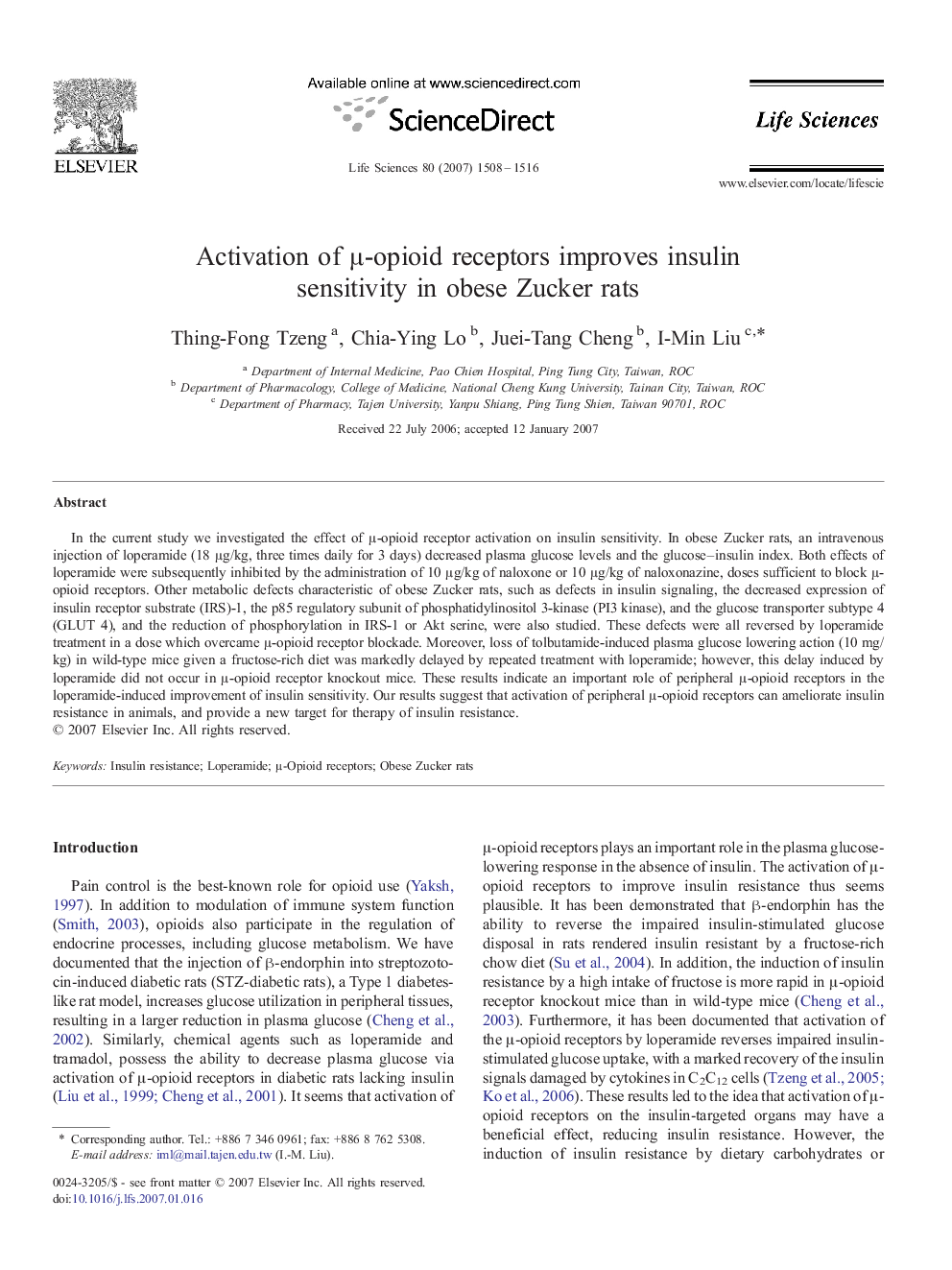| کد مقاله | کد نشریه | سال انتشار | مقاله انگلیسی | نسخه تمام متن |
|---|---|---|---|---|
| 2553857 | 1124930 | 2007 | 9 صفحه PDF | دانلود رایگان |

In the current study we investigated the effect of μ-opioid receptor activation on insulin sensitivity. In obese Zucker rats, an intravenous injection of loperamide (18 μg/kg, three times daily for 3 days) decreased plasma glucose levels and the glucose–insulin index. Both effects of loperamide were subsequently inhibited by the administration of 10 μg/kg of naloxone or 10 μg/kg of naloxonazine, doses sufficient to block μ-opioid receptors. Other metabolic defects characteristic of obese Zucker rats, such as defects in insulin signaling, the decreased expression of insulin receptor substrate (IRS)-1, the p85 regulatory subunit of phosphatidylinositol 3-kinase (PI3 kinase), and the glucose transporter subtype 4 (GLUT 4), and the reduction of phosphorylation in IRS-1 or Akt serine, were also studied. These defects were all reversed by loperamide treatment in a dose which overcame μ-opioid receptor blockade. Moreover, loss of tolbutamide-induced plasma glucose lowering action (10 mg/kg) in wild-type mice given a fructose-rich diet was markedly delayed by repeated treatment with loperamide; however, this delay induced by loperamide did not occur in μ-opioid receptor knockout mice. These results indicate an important role of peripheral μ-opioid receptors in the loperamide-induced improvement of insulin sensitivity. Our results suggest that activation of peripheral μ-opioid receptors can ameliorate insulin resistance in animals, and provide a new target for therapy of insulin resistance.
Journal: Life Sciences - Volume 80, Issue 16, 27 March 2007, Pages 1508–1516